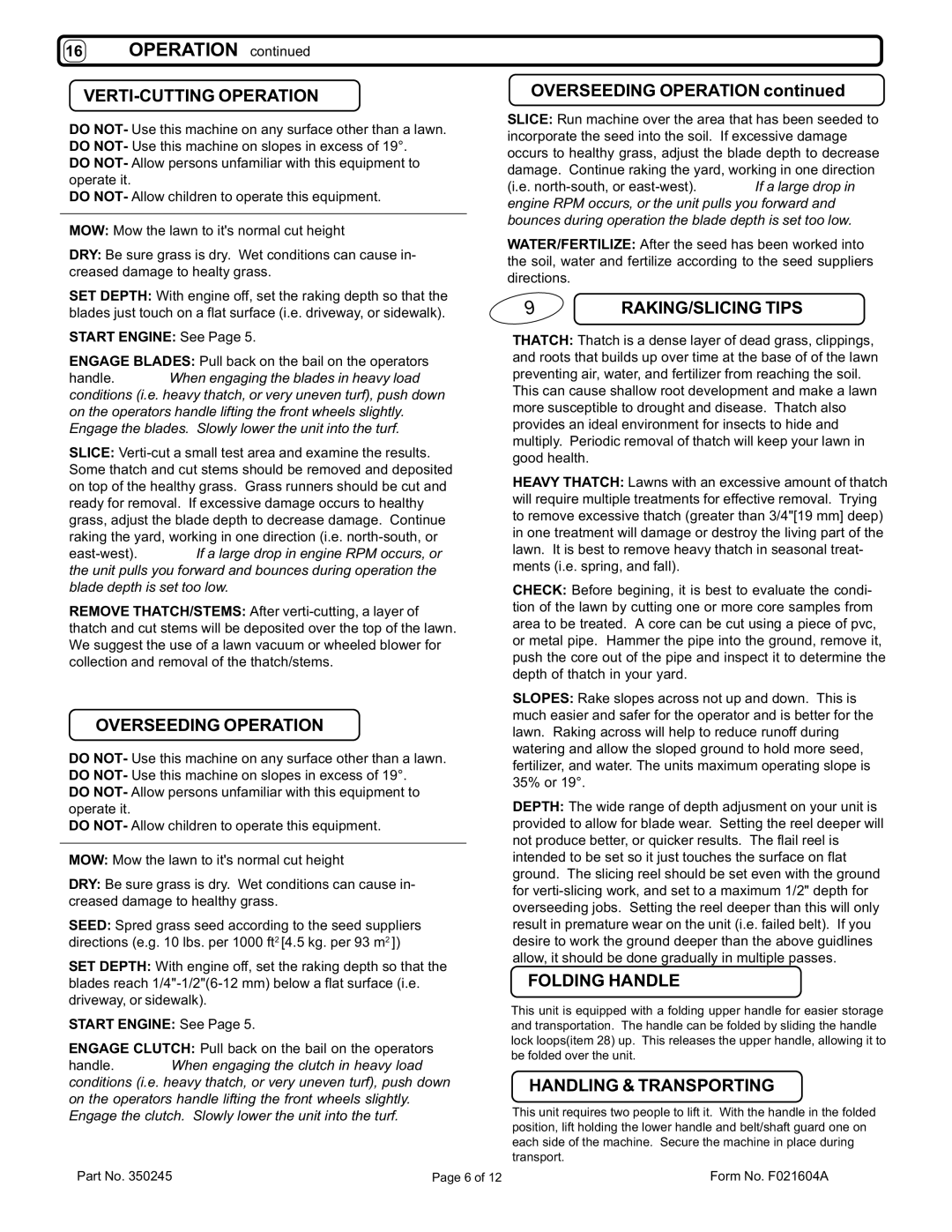CR550HCV specifications
The Billy Goat CR550HCV is a robust and efficient commercial-grade leaf blower that has become a favorite among landscaping professionals and homeowners alike. Renowned for its powerful performance and ease of use, this machine is designed to tackle a variety of outdoor cleaning tasks, making it an essential tool for maintaining lawns, gardens, and outdoor spaces.One of the main features of the CR550HCV is its impressive 196cc Honda engine, which provides a strong and reliable power source. This engine generates air speeds of up to 200 miles per hour, enabling users to clear leaves, debris, and even light snow with ease. The blower is equipped with a 4-stroke engine that is designed for optimal fuel efficiency and reduced emissions, making it an environmentally friendly choice for outdoor maintenance.
The CR550HCV boasts a lightweight design that enhances maneuverability, allowing users to navigate tight spaces and ensure thorough cleaning in hard-to-reach areas. Weighing only 65 pounds, it is well-balanced and easy to handle, which is particularly beneficial during extended periods of use. The ergonomic handle is designed for comfort, featuring vibration-dampening technology that reduces operator fatigue.
One of the standout technologies in the CR550HCV is the "StartSimple" starting system. This feature simplifies the starting process, allowing users to get to work quickly without the hassle of complicated starting procedures. The blower also includes a high-performance air filtration system, ensuring that the engine runs smoothly and prolonging its lifespan by keeping dirt and debris out.
The CR550HCV is designed for versatility, making it suitable for both residential and commercial applications. Its variable-speed throttle control enables users to adjust the airflow to suit different tasks, from gentle blowing for flowerbeds to high-powered clearing for driveways and large lawns. The machine also features a durable impeller that enhances its performance, producing a wide air volume for efficient debris removal.
Additionally, the CR550HCV is built with a sturdy frame and durable components, ensuring longevity and resilience in demanding environments. It also includes a protective cover for the engine, safeguarding it from the elements and ensuring reliable performance throughout the seasons.
In summary, the Billy Goat CR550HCV leaf blower combines power, efficiency, and user-friendly features, making it an excellent investment for anyone looking to maintain their outdoor space. With its Honda engine, lightweight construction, and advanced technologies, this machine delivers exceptional performance, setting a new standard in the world of outdoor power equipment.

